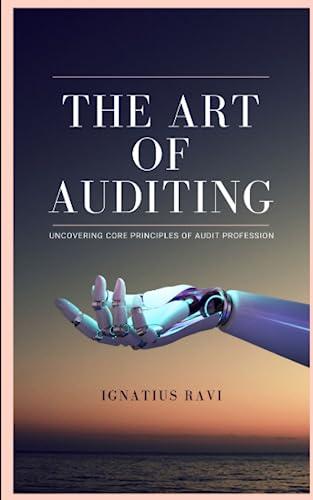Question
Question 1 Part A Beta Group Beta Group specialises in the manufacture and sale of motorcycles. Each motorcycle consists of a main unit plus a
Question 1
Part A Beta Group
Beta Group specialises in the manufacture and sale of motorcycles. Each motorcycle consists of a main unit plus a set of motorcycle fittings. The company is split into two divisions, A and B. Division A manufactures the motorcycle and Division B manufactures sets of motorcycle fittings. Currently, all of Division As sales are made externally. Division B, however, sells to Division A as well as to external customers. Both of the divisions are profit centres.
The following data are available for both divisions:
Division A
| Current selling price for each motorcycle 900 |
| Costs per motorcycle: |
| Fittings from Division B 150 |
| Other materials from external suppliers 400 |
| Labour costs 90 |
| Annual fixed overheads 14,880,000 |
| Annual production and sales of motorcycles (units) 80,000 |
| Maximum annual market demand for motorcycles (units) 80,000 |
| Investment 33,625,000 |
Division B
| Current external selling price per set of fittings 160 |
| Current price for sales to Division A 150 |
| Costs per set of fittings: |
| Materials 10 |
| Labour costs 30 |
| Annual fixed overheads 8, 800 000 |
| Maximum annual production and sales of sets of fittings (units) 200,000 |
| (including internal and external sales) |
| Maximum annual external demand for sets of fittings (units) 180,000 |
| Maximum annual internal demand for sets of fittings (units) 80,000 |
| Investment 57,250,000 |
Other relevant information:
- Three measures are currently used to evaluate the performance of the divisional managers: Return on Investment (ROI), Residual Income (RI) and net profit margin in relation to sales. The company uses a target Return on Capital of 20%.
- Division A is currently achieving a rate of return well below the target set by the central office. The manager blames this situation on the transfer price. The transfer price charged by Division B to Division A was negotiated some years ago between the previous divisional managers, who have now both been replaced by new managers.
- Head office only allows Division A to purchase its fittings from Division B, although the new manager of Division A believes that he could obtain fittings of the same quality and appearance for 130 per set, if he were given autonomy to purchase from outside the company. Division B makes no cost savings from supplying internally to Division A rather than selling externally.
Required:
a) Advise the management by preparing a profit statement showing the profit for each of the divisions under the current transfer pricing system and performance measures of each division. Your sales and costs figures should be split into external sales and interdivisional transfers, where appropriate.
b) Calculate the maximum profit that could be earned by each division and performance measures if the Beta group change the transfer pricing policy to ensure maximization of company profits without demotivating either of the divisional managers. Division A will be given autonomy to buy from external suppliers and Division B to supply external customers in priority to supplying to Division A.
c) Transfer pricing is an accounting practice that represents the price that one division in a company charges another division for goods and services provided. Discuss the importance of setting transfer pricing in companies.
d) There are five methods to determine the transfer pricing: Market-based; Marginal cost; Full cost; Cost-plus a mark-up and Negotiated transfer prices. Discuss how to use these methods to determine the transfer price.
Step by Step Solution
There are 3 Steps involved in it
Step: 1

Get Instant Access to Expert-Tailored Solutions
See step-by-step solutions with expert insights and AI powered tools for academic success
Step: 2

Step: 3

Ace Your Homework with AI
Get the answers you need in no time with our AI-driven, step-by-step assistance
Get Started


